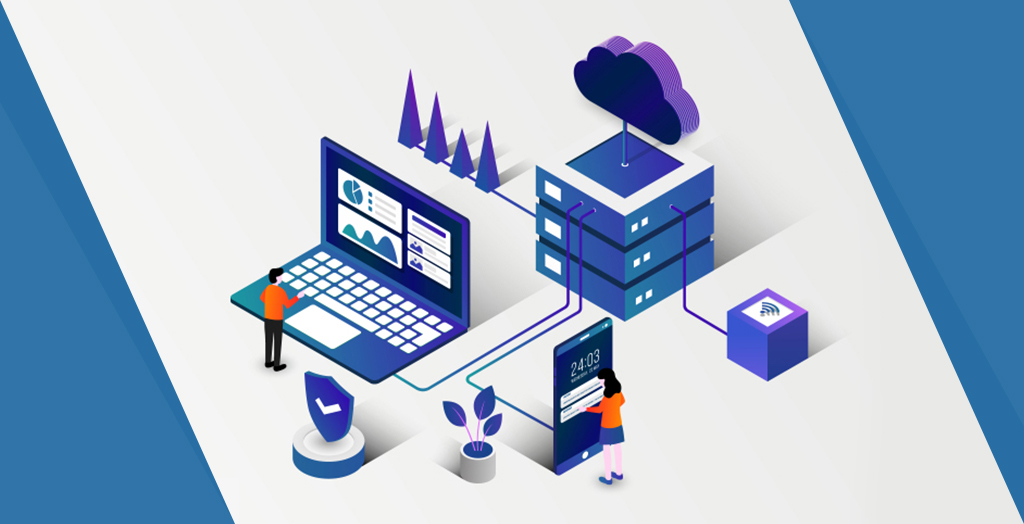Table of Contents
Cloud computing is a technological revolution that has completely transformed the way businesses operate. With the power of the cloud, businesses can transcend traditional barriers and reach new heights of productivity, efficiency, and innovation. 94% of businesses already use cloud technology in some capacity, and that number is only expected to grow in the coming years.
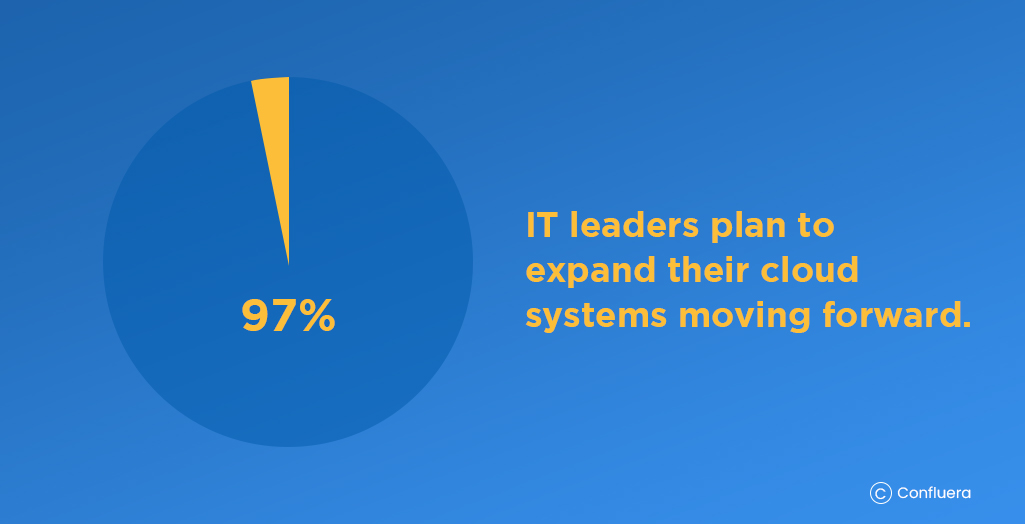
But what exactly is cloud migration, and why is it so important for businesses?
Let’s explore this comprehensive guide that provides everything you need to know to make the most of this critical process called Cloud Migration.
What is Cloud Migration?
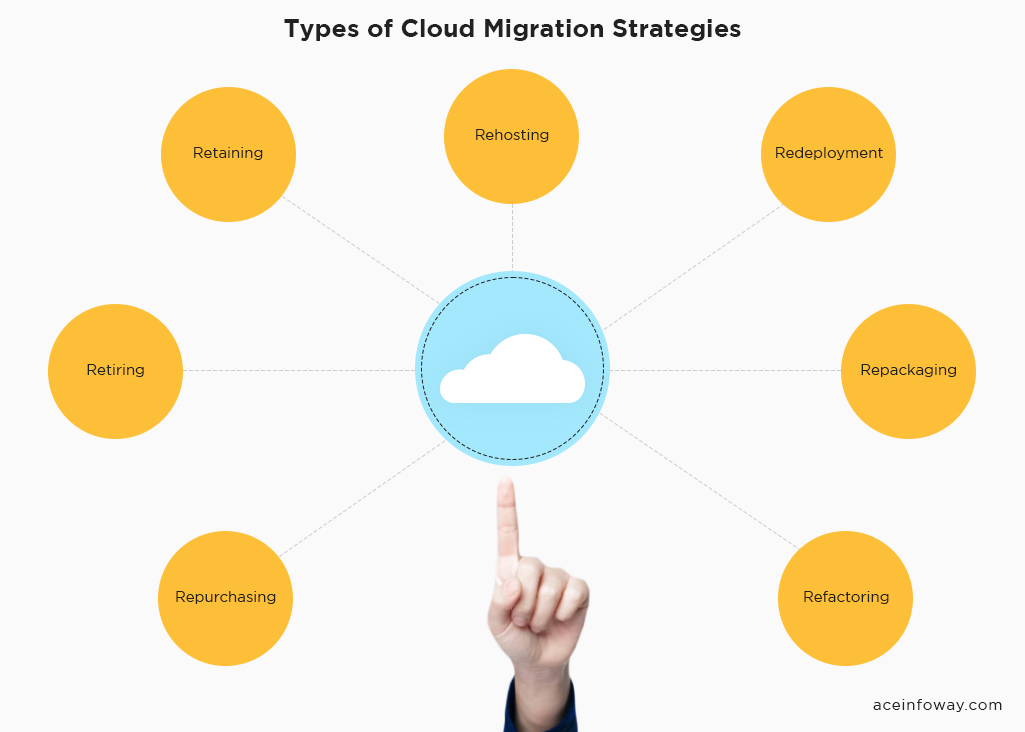
Cloud migration is the critical transfer of an organization’s essential data, applications, and other business assets from its in-house infrastructure to the cloud. This process involves re-architecting existing systems and applications to align with the cloud architecture and taking advantage of the cloud’s capabilities, such as auto-scaling, fault-tolerance, and pay-as-you-go pricing models.
There is a variety of cloud migration strategies available for organizations:
- Rehosting (Lift and Shift): This involves moving an application from an on-premise infrastructure to the cloud without making any changes to the application. This strategy is often used when organizations want to quickly migrate their applications to the cloud without making significant changes.
- Redeployment: This involves moving an application from one environment to another, such as from a test environment to a production environment, but without making any changes to the application architecture.
- Repackaging: This involves making minor changes to the application architecture, such as updating the software version, in order to make the application compatible with the cloud environment.
- Refactoring (Re-architecting): This involves making significant changes to the application architecture in order to take advantage of cloud-native features, such as scalability and fault tolerance. This strategy can result in significant improvements in application performance and cost savings.
- Repurchasing: This involves replacing an existing application with a cloud-native solution, such as replacing an on-premise customer relationship management (CRM) system with a cloud-based CRM solution.
- Retiring: This involves decommissioning applications or systems that are no longer needed or are outdated.
- Retaining: This involves keeping applications or systems on-premise, rather than migrating them to the cloud, due to regulatory or compliance requirements, or because the cost of migration outweighs the benefits.
How to Prepare for Cloud Migration?
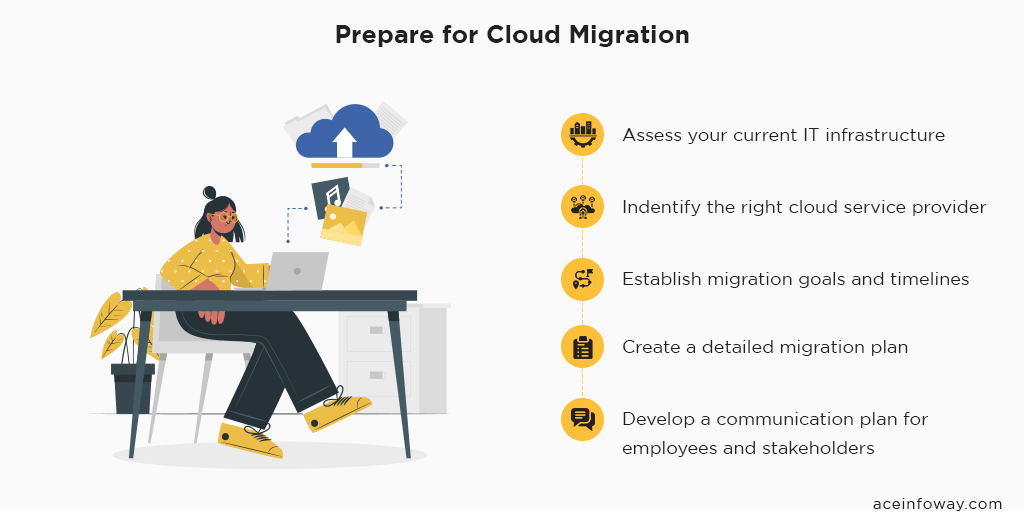
Embarking on a cloud migration journey can be a game-changer for your business, but only if you’re well-prepared. Before you dive into the cloud, take a moment to consider the following crucial steps that can make or break your cloud migration success:
💡 Assess your current IT infrastructure
Don’t make the mistake of diving into cloud migration blindly. Before you start, it’s crucial to conduct a thorough assessment of your existing IT infrastructure. This will help you identify any potential issues and bottlenecks that could affect your migration process. Look at your hardware, software, network infrastructure, data storage, and security measures to ensure that they align with your migration goals.
For instance, an e-commerce business that wants to migrate to the cloud needs to assess its existing data storage and network infrastructure. They need to ensure that their current systems can handle the volume of traffic and transactions that they process daily and that they can scale up or down as needed in the cloud environment.
💡 Identify the right cloud service provider
Choosing the right cloud service provider is a critical decision. You need a provider that can meet your specific business needs, provide adequate support, and offer top-notch security measures.
Consider factors like:
- company’s reputation,
- pricing,
- service level agreements (SLAs), and
- compliance with industry standards and regulations.
💡 Establish migration goals and timelines
Setting clear migration goals and timelines is key to keeping the project on track and ensuring that all stakeholders are aligned. The major factors to establish clear objectives include:
- reducing costs,
- improving performance,
- enhancing security, and
- determining a realistic timeline for achieving them.
💡 Create a detailed migration plan
A detailed migration plan is critical to the success of your migration. It should outline the step-by-step process for each stage of the migration, including testing and validation. You should also factor in potential risks and challenges associated with migration and develop a contingency plan to mitigate them.
💡 Develop a communication plan for employees and stakeholders
Effective communication is critical when it comes to cloud migration. Develop a communication plan to keep your employees and stakeholders informed throughout the migration process. This can include regular updates on the status of the migration, training on new tools and processes, and support for any issues that arise.
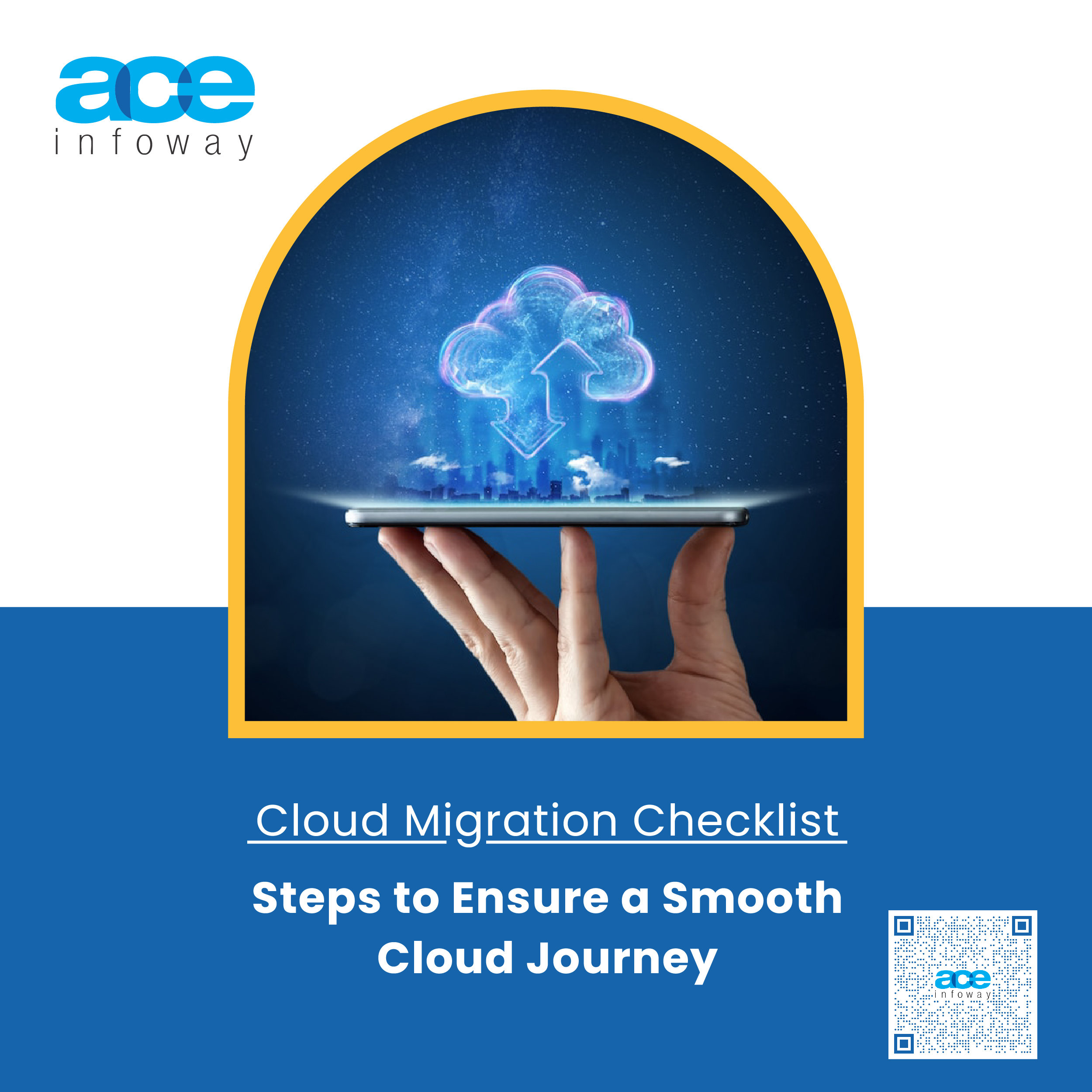
Cloud Migration Checklist for a Smooth Journey
Get your free copy
How to execute Cloud Migration?
Once you have prepared your IT infrastructure and selected a cloud service provider, it’s time to move forward with executing your cloud migration. In this section, we will discuss the essential steps involved in executing cloud migration.
👉 Preparing your IT environment
Before you begin the migration process, you need to ensure that your IT environment is ready for the move to the cloud. This may involve updating hardware and software, configuring your network, and optimizing your data storage. Here are some key steps to consider:
- Conduct a final assessment of your IT environment to identify any potential issues or bottlenecks.
- Update your systems and applications to ensure compatibility with the cloud environment.
- Optimize your data storage to ensure that it’s scalable and secure.
- Configure your network settings to enable seamless communication between on-premise and cloud systems.
👉 Migrating your data and applications
Once your IT environment is ready, it’s time to start migrating your data and applications to the cloud. Here are some essential steps to consider:
- Choose the appropriate migration method based on your specific needs and requirements.
- Migrate your data and applications in phases to minimize disruptions and ensure a smooth transition.
- Use migration tools and services to simplify and automate the migration process.
- Ensure that your data is migrated securely and accurately, with minimal risk of data loss or corruption.
👉 Testing and validating your migration
After migrating your data and applications to the cloud, you need to test and validate your migration to ensure that everything is working as expected. Here are some key steps to consider:
- Test your applications and systems thoroughly to ensure that they are functioning correctly.
- Conduct performance testing to ensure that your applications are performing optimally in the cloud environment.
- Validate that all data has been migrated accurately and securely.
- Conduct user acceptance testing to ensure that all stakeholders are satisfied with the new cloud environment.
👉 Monitoring and optimizing your cloud environment
After completing the migration, it’s crucial to monitor and optimize your cloud environment continually. Some essential steps to consider are:
- Use cloud monitoring tools and services to monitor performance, security, and compliance.
- Continuously optimize your systems and applications to ensure maximum performance and cost efficiency.
- Stay up-to-date with the latest cloud technologies and best practices to ensure that your environment is secure and compliant.
👉 Ensuring data security and compliance
One of the most critical aspects of cloud migration is ensuring data security and compliance. Here are some essential steps to consider:
- Ensure that your cloud service provider meets your specific security and compliance requirements.
- Implement appropriate security measures, such as encryption and access controls, to protect your data.
- Regularly review and update your security policies and procedures to stay compliant with industry regulations and standards.
Best Practices for Successful Cloud Migration
To ensure a successful cloud migration, there are several best practices that organizations should follow:
- Develop a cloud migration team with a mix of technical and business expertise: Having a dedicated team with the right mix of technical and business expertise can help ensure a smooth and successful migration. This team should include representatives from IT, security, finance, and other relevant departments.
- Leverage automation and tools to streamline the migration process: Automation can help streamline the migration process and reduce the risk of errors. Tools such as migration assessment and planning tools, backup and recovery tools, and migration testing tools can be used to automate various aspects of the migration process.
- Establish clear metrics and KPIs to measure success: Defining clear metrics and KPIs upfront can help organizations measure the success of their migration and identify areas for improvement. Some key metrics to consider include cost savings, improved performance, and increased availability.
- Establish a disaster recovery plan: Organizations should have a disaster recovery plan in place to ensure business continuity in the event of an outage or other disruption. This plan should include regular backups, testing, and procedures for restoring services in the event of an incident.
What are the common challenges in Cloud Migration and how to overcome them?
Embarking on a cloud migration journey can be daunting, with many obstacles that can hinder a smooth transition. However, with the right strategies in place, you can overcome these challenges and ensure a successful migration to the cloud. In this section, we’ll discuss some of the most common challenges associated with cloud migration and provide tips on how to overcome them.
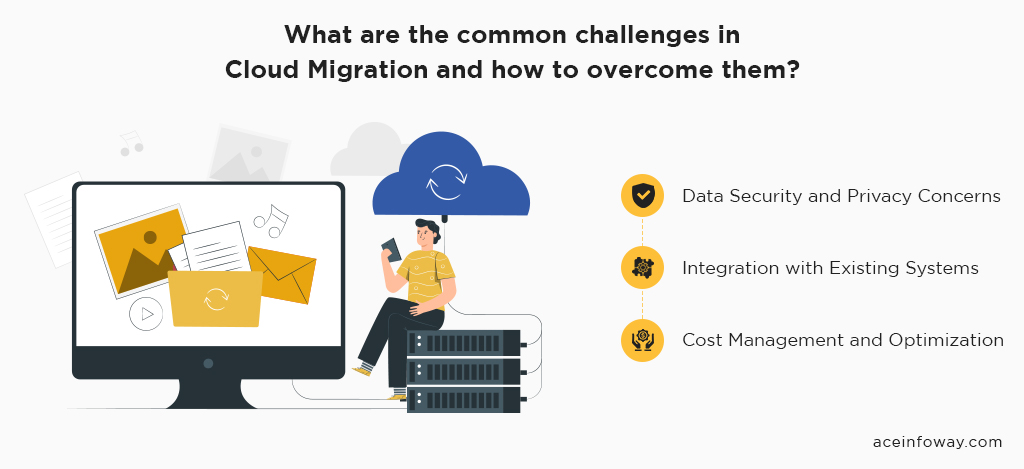
1) Data Security and Privacy Concerns
One of the biggest concerns when it comes to cloud migration is the security and privacy of sensitive data. To mitigate this challenge, it’s important to ensure that your cloud service provider has robust security measures in place, such as encryption, access controls, and regular security audits. Additionally, you can implement data governance policies and procedures to ensure that sensitive data is properly protected.
2) Integration with Existing Systems
Integrating cloud services with existing systems can be a challenge, as it requires seamless connectivity between different platforms. To overcome this challenge, you can leverage integration tools and APIs to create a unified architecture. Additionally, you can conduct thorough testing to ensure that the integration is seamless and doesn’t impact the performance of your existing systems.
3) Cost Management and Optimization
Cost management and optimization are other challenges that many organizations face during cloud migration. To overcome this, you can start by establishing a clear budget and setting cost management goals. You can also leverage cost optimization tools and services to help you identify areas where you can reduce costs, such as by optimizing resource utilization or leveraging spot instances. Additionally, you can regularly monitor and analyze your cloud usage to ensure that you are getting the most value for your investment.

Cloud Migration Checklist for a Smooth Journey
Get your free copy
Wrap-Up
Cloud migration offers numerous benefits for businesses looking to improve their IT infrastructure, reduce costs, and enhance flexibility and scalability. While the process can be complex and present challenges, proper planning, execution, and adherence to best practices can help ensure a successful transition to the cloud. Don’t miss out on the advantages that cloud migration can bring to your organization. Contact our expert cloud migration team today to learn how we can help you make a seamless transition to the cloud.










